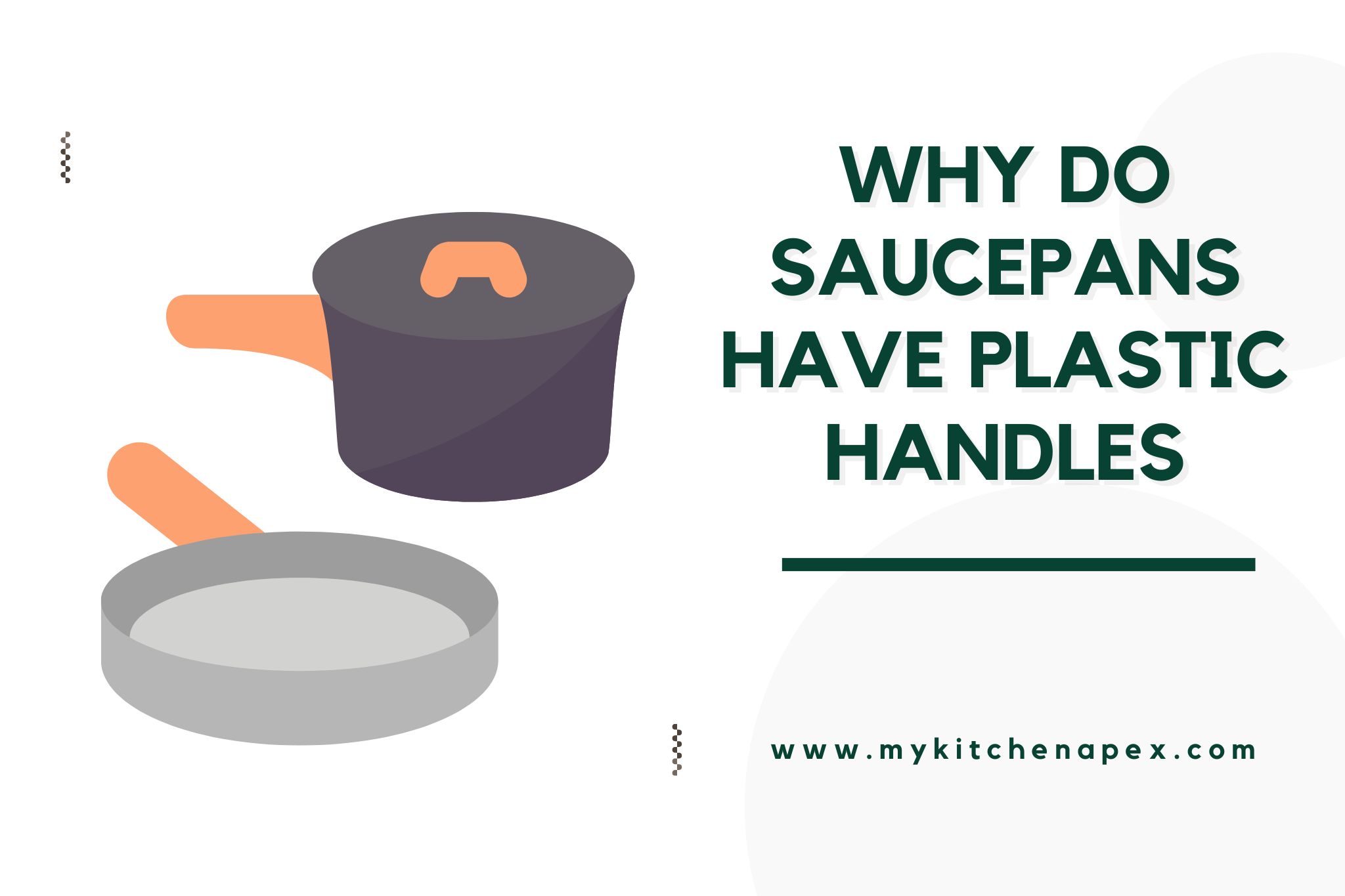Originally Created on: February 24, 2024 @ 8:22 pm
Have you ever wondered why saucepans come with plastic handles? It seems like such a simple and practical feature, but have you ever stopped to consider the reasoning behind it? Understanding the purpose of these handles can shed some light on the design and functionality of this kitchen staple.
The use of plastic handles on saucepans is not just a matter of preference, but rather a key component in ensuring safety and usability in the kitchen.
By delving into the history and evolution of saucepan design, we can uncover the thought process behind this seemingly straightforward feature.
Table of Content
Highlights:
- Plastic handles are heat-resistant and safe to touch
- They are lightweight, durable, and easy to grip
- Provide a comfortable and safe cooking experience
why do saucepans have plastic handles
Saucepans commonly have plastic handles because they are heat resistant. This material remains cool to the touch during cooking, making it convenient and safe for handling.
Additionally, plastic handles are lightweight, easy to grip, and durable, providing a comfortable cooking experience.
The heat-resistant property of plastic handles allows for easy maneuvering and control while cooking. This feature also reduces the risk of accidental burns or injuries in the kitchen.
Furthermore, the use of plastic in handle design provides an affordable and practical solution for cookware, making it a popular choice for many consumers.
You May Also Like: why do pans warp
Are plastic handles safe on saucepans?
Yes, plastic handles on saucepans can be safe as long as they are made from high-quality, heat-resistant materials that can withstand the temperatures typically used for cooking.
Look for handles that are specifically designed for use with heat and are constructed from strong, durable plastics that won’t melt or release harmful chemicals when exposed to high heat. It’s also important to follow the manufacturer’s instructions for proper use and care to ensure the handles remain safe for cooking.
When choosing saucepans with plastic handles, it’s essential to consider the type of cooking you’ll be doing and the specific heat requirements of your recipes.
For example, if you frequently cook at high temperatures, such as searing or sautéing, you may want to opt for saucepans with metal handles for added safety and durability. However, for lower-temperature cooking or if you have concerns about the weight of the pan, plastic handles can provide a comfortable and safe option for handling and maneuvering the cookware.
As always, it’s best to carefully research and choose trusted brands and products to ensure the safety and functionality of your cooking equipment.
Can plastic handles withstand high heat?
Yes, plastic handles may not be able to withstand high heat. While some plastic materials are designed to be heat-resistant, many common plastics can melt or deform when exposed to high temperatures. It is important to consider the specific type of plastic and its intended use when evaluating its ability to withstand heat.
Additionally, factors such as the duration of exposure to heat and the surrounding environment can also impact the ability of plastic handles to withstand high temperatures. It’s essential to follow the manufacturer’s guidelines and recommendations for using plastic handles in high-heat situations to ensure their longevity and performance. Understanding the limitations of plastic handles in high-heat environments can help prevent damage and ensure the safety of the user.
Also Read: why do pans warp in the oven
Are there alternatives to plastic handles on saucepans?
Yes, there are several alternatives to plastic handles on saucepans. One popular option is stainless steel handles, which are durable, heat-resistant, and often dishwasher safe.
Another option is wooden handles, which not only provide a classic, rustic look but also offer good heat resistance and a comfortable grip.
Silicone handles are also a great alternative to plastic, as they are heat-resistant, non-toxic, and come in various colors and designs. Additionally, there are some saucepans with detachable handles, allowing for easy customization and replacement with alternative materials such as rubber or porcelain.
Overall, there are plenty of alternatives to plastic handles on saucepans that offer both aesthetic appeal and practicality.
Why don t cooking pans have metal handles?
Cooking pans typically do not have metal handles due to the risk of heat transfer. Metals conduct heat very well, so if a pan had a metal handle, it could become extremely hot when the pan is being used on a stove.
This would make it difficult and potentially dangerous for the cook to handle the pan without getting burned.
Instead, many cooking pans are designed with heat-resistant materials for their handles, such as plastic or wood, to prevent heat from transferring and to provide a safe grip for the cook.
These materials help to keep the handle cool to the touch, making it easier and safer to maneuver the pan during cooking. Additionally, non-metal handles are often more comfortable to hold, providing a better cooking experience for the user.
Also Read: why is my garbage disposal clicking sound
Final Thoughts
Saucepans commonly have plastic handles for safety and convenience, as they are heat resistant and remain cool to the touch. Plastic handles are also lightweight, easy to grip, and durable, providing a comfortable cooking experience.
When choosing saucepans with plastic handles, it’s important to ensure they are made from high-quality, heat-resistant materials. Alternatives to plastic handles include stainless steel, wood, and silicone, offering both aesthetic appeal and practicality.
Cooking pans typically do not have metal handles to prevent heat transfer and potential burns. Overall, the use of non-metal handles in saucepan design prioritizes safety and usability in the kitchen.

